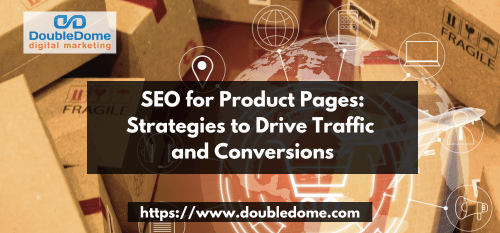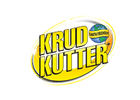By Jo Medico
Having a strong online presence is essential for any business looking to succeed. One of the most effective ways to increase visibility and drive traffic to your website is through search engine optimization (SEO). When it comes to product pages, optimizing them for search engines is crucial for attracting potential customers and increasing conversions. In this comprehensive guide, we’ll explore the best strategies to optimize product pages for SEO, ultimately driving more traffic and boosting sales.

Understanding the Importance of SEO for Product Pages
Before diving into specific strategies, let’s first understand why SEO is essential for product pages. When users search for products online, they often turn to search engines like Google to find what they’re looking for. By optimizing product pages for relevant keywords, businesses can ensure that their products appear prominently in search results, increasing the likelihood of attracting qualified leads and driving conversions.
The Role of Keywords in Product Page SEO
Keywords are the foundation of any successful SEO strategy, and this holds true for product pages as well. Conducting thorough keyword research to identify the terms and phrases that potential customers are using to search for products in your niche is crucial. Incorporate these keywords naturally into your product page content, including the title, headings, product descriptions, and metadata.
Optimizing Product Titles and Descriptions
The title and description of a product are among the most important elements for both users and search engines. Craft compelling, descriptive titles that accurately convey the essence of the product while incorporating relevant keywords. Similarly, write detailed product descriptions that highlight key features, benefits, and use cases, utilizing keywords strategically throughout.
Creating High-Quality Content
In addition to product titles and descriptions, adding high-quality content to product pages can significantly enhance their SEO performance. Consider including informative articles, how-to guides, customer reviews, and videos that provide valuable information and engage users. Not only does this improve the user experience, but it also signals to search engines that the page is authoritative and worthy of ranking.
Optimizing Images and Multimedia
Images play a crucial role in e-commerce product pages, but they can also impact SEO. Optimize product images by using descriptive filenames, adding alt text that includes relevant keywords, and compressing images to improve page load times. Additionally, consider incorporating videos, 360-degree views, and interactive media to enhance the user experience and keep visitors engaged.
Implementing Structured Data Markup
Structured data markup, such as schema.org, helps search engines understand the content of your product pages better. By implementing structured data markup, you can provide search engines with additional context about your products, such as price, availability, reviews, and more. This can lead to rich snippets in search results, which can improve click-through rates and drive more traffic to your product pages.
Optimizing for Mobile Devices
With an increasing number of users accessing the internet on mobile devices, optimizing product pages for mobile is essential. Ensure that your product pages are mobile-friendly, with responsive design, fast load times, and intuitive navigation. Google’s mobile-first indexing means that mobile-friendly pages are given priority in search results, making this optimization step critical for SEO success.
Monitoring and Iterating
SEO is an ongoing process, and it’s essential to monitor the performance of your product pages regularly. Use tools like Google Analytics and Google Search Console to track key metrics such as organic traffic, rankings, click-through rates, and conversions. Analyze this data to identify areas for improvement and iterate on your SEO strategy accordingly.
10 Best Practices for Optimizing Product Pages in 2024
Optimizing product pages is essential to stand out in search engine results and attract potential customers. With the ever-changing landscape of SEO and user behavior, it’s crucial to stay updated on the best practices for maximizing the effectiveness of product pages. In this guide, we’ll explore ten actionable strategies for optimizing product pages in 2024, complete with practical examples to illustrate each concept.
1. Conduct Comprehensive Keyword Research
Before optimizing product pages, it’s essential to conduct thorough keyword research to identify the terms and phrases your target audience is using to search for products. Tools like SEMrush, Ahrefs, and Google Keyword Planner can help uncover valuable keywords with high search volume and low competition. For example, if you sell organic skincare products, relevant keywords might include “natural skincare,” “organic moisturizer,” and “cruelty-free cosmetics.”
2. Optimize Product Titles for Clarity and Relevance
Craft clear and concise product titles that accurately describe the product and include relevant keywords. Avoid generic titles and instead focus on highlighting unique selling points and benefits. For instance, instead of simply titling a product “Blue Sofa,” opt for “Modern Velvet Sofa with Tufted Design – Navy Blue.”
3. Write Compelling and Informative Product Descriptions
Invest time in crafting compelling product descriptions that provide detailed information about the product’s features, benefits, and use cases. Use language that resonates with your target audience and addresses their pain points. For example, a product description for a wireless charging pad could highlight its compatibility with various devices, fast-charging capabilities, and sleek design.
4. Utilize High-Quality Images and Multimedia
Visuals play a crucial role in capturing the attention of potential customers and conveying the value of a product. Use high-quality images that showcase the product from multiple angles and in different settings. Additionally, consider incorporating multimedia elements such as videos or 360-degree views to provide a more immersive shopping experience.
5. Optimize Product Images for SEO
Optimize product images for search engines by using descriptive filenames and adding alt text that includes relevant keywords. For example, instead of naming an image file “IMG12345.jpg,” use a descriptive filename like “organic-skincare-products.jpg” and add alt text such as “Organic Skincare Products – Cruelty-Free and Vegan.”
6. Implement Structured Data Markup
Structured data markup, such as schema.org, helps search engines understand the content of your product pages better. Implement structured data markup to provide additional context about your products, such as price, availability, and reviews. This can enhance your chances of appearing in rich snippets in search results.
7. Optimize Product Pages for Mobile Devices
With an increasing number of users browsing and shopping on mobile devices, it’s crucial to ensure that product pages are optimized for mobile. Use responsive design to ensure that pages render correctly on screens of all sizes, and prioritize fast load times to minimize bounce rates. Test your product pages on various mobile devices to ensure a seamless user experience.
8. Encourage User-Generated Content
User-generated content, such as customer reviews and testimonials, can significantly impact purchasing decisions and boost credibility. Encourage customers to leave reviews and testimonials by offering incentives or making the process seamless. Displaying user-generated content prominently on product pages can increase trust and engagement.
9. Monitor Performance and Iterate
Regularly monitor the performance of your product pages using tools like Google Analytics and Google Search Console. Track key metrics such as organic traffic, conversion rates, and bounce rates to identify areas for improvement. Use this data to iterate on your optimization strategies and continually refine your product pages for better results.
10. Stay Updated on SEO Trends and Best Practices
Finally, stay updated on the latest SEO trends and best practices to ensure that your product pages remain competitive in the ever-evolving digital landscape. Subscribe to industry newsletters, attend webinars, and follow reputable SEO blogs to stay informed about new techniques and strategies.
Conclusion
Optimizing product pages for SEO is crucial for driving traffic and conversions in today’s competitive online landscape. By implementing the strategies outlined in this guide, businesses can improve the visibility of their product pages in search results, attract more qualified leads, and ultimately increase sales and revenue.
Boost your online visibility with DoubleDome’s top-notch SEO Services! Drive organic traffic and dominate search rankings. Ready to elevate your digital presence? Message us now for tailored SEO solutions!








